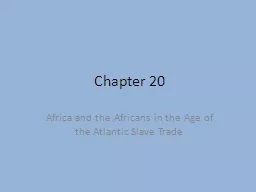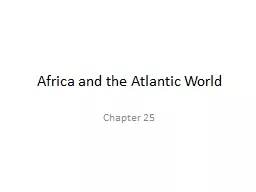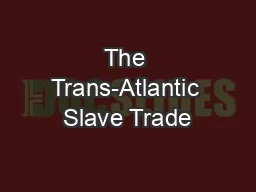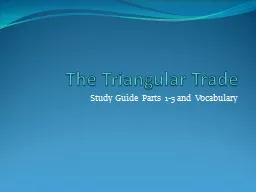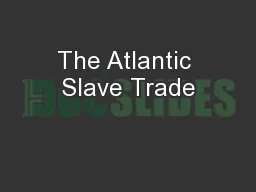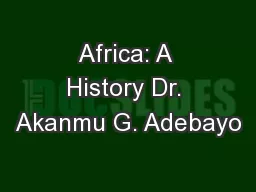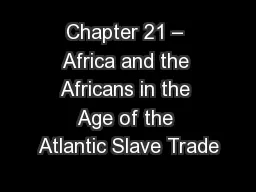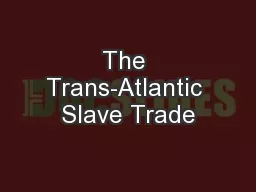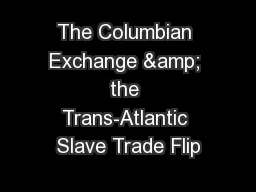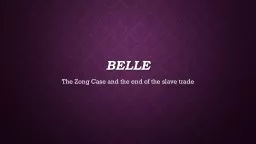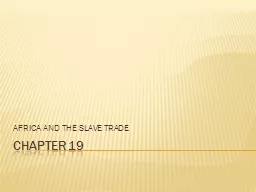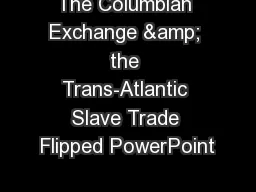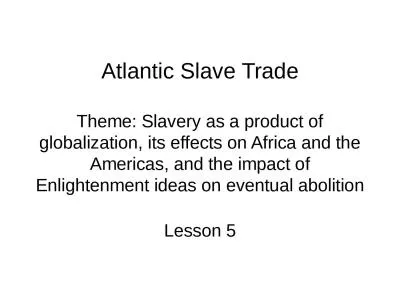PPT-Chapter 20 Africa and the Africans in the Age of the Atlantic Slave Trade
Author : min-jolicoeur | Published Date : 2018-09-22
The Beginning Factories Established trading forts allowing trade from the interior Much is established with the consent of the African people El Mina Missionary
Presentation Embed Code
Download Presentation
Download Presentation The PPT/PDF document "Chapter 20 Africa and the Africans in th..." is the property of its rightful owner. Permission is granted to download and print the materials on this website for personal, non-commercial use only, and to display it on your personal computer provided you do not modify the materials and that you retain all copyright notices contained in the materials. By downloading content from our website, you accept the terms of this agreement.
Chapter 20 Africa and the Africans in the Age of the Atlantic Slave Trade: Transcript
Download Rules Of Document
"Chapter 20 Africa and the Africans in the Age of the Atlantic Slave Trade"The content belongs to its owner. You may download and print it for personal use, without modification, and keep all copyright notices. By downloading, you agree to these terms.
Related Documents

